Realizing Children’s Rights in Colombia
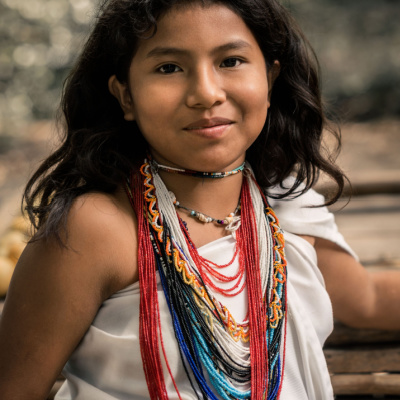
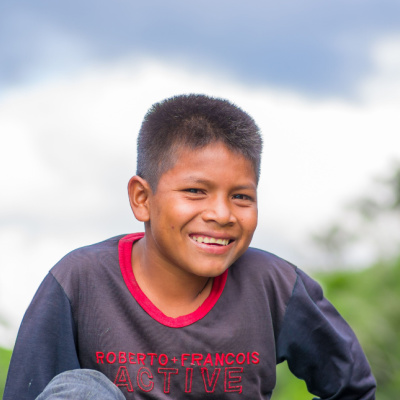
The Republic of Colombia has seen a reduction in violence against children and has also noted a decline in child homicide. However, due to the isolation measures imposed to curb the spread of COVID-19, reports of gender-based violence have increased. In addition to this, indigenous and Afro-Columbian Colombia continues to suffer from discrimination and forced displacement of children as well as experience great disparity between children in urban and rural areas.

Children’s Rights Index: 7.22 / 10
Red Level: Difficult Situation
Population: 51,512,766
Pop. ages 0-14: 22.184%
Life expectancy: 77.287 years
Under-5 mortality rate: 13.2‰
Colombia at a glance
The Republic of Colombia is located in the northwestern part of South America. The coast to the north is the Caribbean Sea and the coast to the west is the Pacific Ocean. The country is bordered by Panama, which divides the two bodies of water, on the northwest, Venezuela and Brazil on the east, and Peru and Ecuador on the south (Garavito, 2022).
Historically, the Spanish, having begun their colonisation of the Caribbean, expanded their empire onto the continental mainland at the start of the 1500s. Soon after, The Spanish began colonisation of Colombia founding Santa Marta in 1525, followed by Cartagena in 1533, the New Kingdom of Granada in 1535, and Cali in 1536. When European diseases such as smallpox reduced the indigenous Caribbean population, slaves were brought from Africa.
The Spanish rule lasted from about 1525 until 1808, during which time; the Royal Audience of Santa Fe de Bogotá controlled the region of the New Kingdom of Granada (Infoplease, 2016). The New Kingdom of Granada comprised what is now known as Colombia, Ecuador, Panama and Venezuela. Venezuela and Ecuador left the New Kingdom of Granada in 1829 and 1830, respectively.
In 1861, the country was called the United States of New Granada; in 1863 it became the United States of Colombia; and in 1885, it was named the Republic of Colombia. In 1899 a civil war broke out, known as the War of a Thousand Days, and lasted until 1902. Panama became a separate nation in 1903 with assistance from the United States of America but was not recognized by Colombia until 1921 after the US paid $25,000,000 in reparations (Iexplore, 2015).
Colombia became relatively stable after this until Marxist guerrilla groups organised in the 1960s and 1970s, most notably the May 19th Movement (M-19), the National Liberation Army (ELN), and the Revolutionary Armed Forces of Colombia (FARC), plunged the country into violence and instability (Iexplore, 2015). The period from 1970 to 1990 saw the emergence of violent and powerful drug cartels, particularly Medellin and Cali cartels which influenced society in Colombia, significantly altering its politics and economy.
In 1991, a new constitution was ratified which prohibited the extradition of Colombian nationals until the provision was repealed in 1996. Despite reforms, Colombia continued to be plagued by illegal factions and drug trade violence, which President Andre Pastrana attempted to reduce between 1999 and 2002. Uribe was elected president in 2002 and his intensive security operations against the FARC were productive, as the number of crimes, kidnappings and terrorist attacks in Colombia significantly decreased during his tenure. (Garavito, 2022)
On August 15, 2017, the Colombian government declared an official end to its conflict with the FARC and the last of the group’s accessible weapons were turned over to UN representatives (Garavito, 2022). Colombia has had a turbulent history marked by slavery and appropriation of indigenous land during the Colonial period followed by political instability, civil war and drug-related violence in recent years. Despite this, the largely homogenous culture is a rich artistic blend of Spanish customs, tribal heritage and Afro-Caribbean traditions. (Iexplore, 2015)
Status of children’s rights [1]
The Republic of Colombia ratified the United Nations Convention on the Rights of the Child (hereinafter the 1989 CRC) on January 28, 1991 (United Nations Human Rights Office of the High Commissioner, 2020), and has been incorporated into national law. Colombia has also ratified the Optional Protocol to the CRC on the involvement of children in armed conflict on 25 May 2005 (United Nations Human Rights Office of the High Commissioner, 2020) and the Optional Protocol to the CRC on the sale of children, child prostitution and child pornography on November 11, 2003 (United Nations Human Rights Office of the High Commissioner, 2020). However, Colombia is yet to ratify the Optional Protocol to the CRC regarding the complaints procedure before the Committee on the Rights of the Child, 2011.
From a regional perspective, Colombia ratified the Inter-American Convention on Human Rights, Pact of San José (1969) (hereinafter Pact of San Jose) on August 18, 1978 (UNTC, 1969). The objective of the Pact of San Jose is to establish international regulations outlining the roles of states in protecting human rights such as the right to life. Additionally, article 19 recognises the importance of protecting children stating that “every minor child has the right to the measures of protection required by his condition as a minor on the part of his family, society, and the state”. (UNTC, 1969) Cooperation with regional bodies is essential in order to guarantee the implementation of children’s rights, both in the State party and in other member States of the Pact of San Jose.
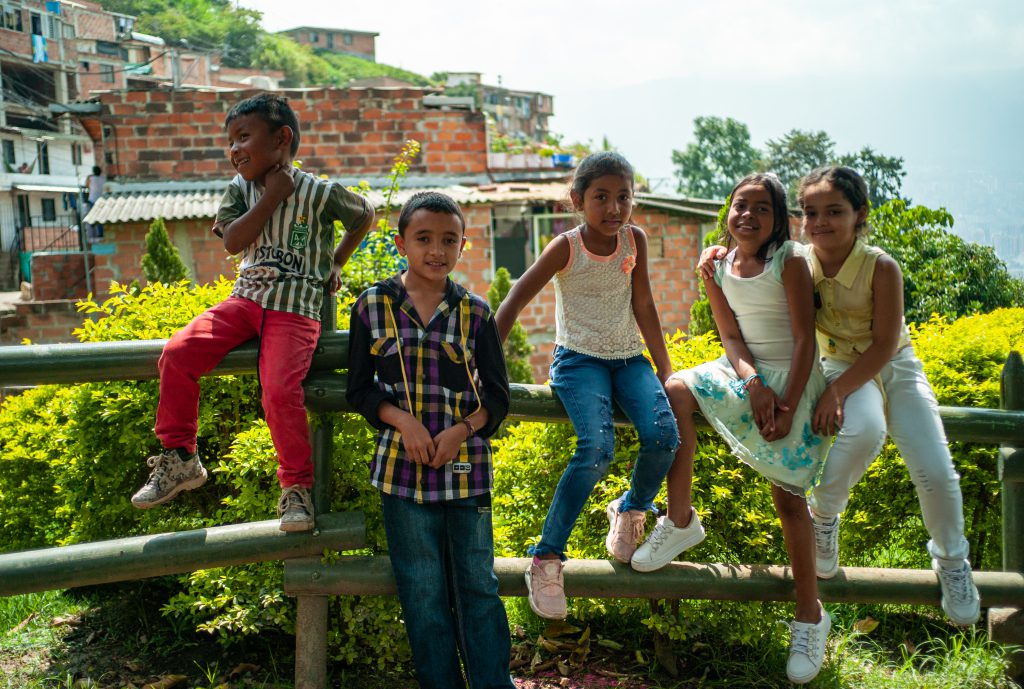
At the national level, Colombia has a sound and broad legislative structure that establishes detailed protective measures concerning the rights of the child. Colombian national legislation on the child has changed over the years, mainly due to the different conceptions that have existed with respect to the principles that should be included in such legislation. Under Colombia’s Constitution of 1991 with amendments through 2015 specifically, article 44 details the rights of children and mandates that these rights be given precedence over the rights of others. (Max Planck Institute, 2021)
Other provisions which directly address the rights of children are articles 42 and 45. Colombia has a comprehensive Code on Children and Adolescents, which was adopted in 2006 and expressly includes the 1989 CRC as an integral part of the Code to be used in guiding its interpretation and application. The country also has other laws relating to children’s rights such as the Prevention of Sexual Violence and Integral Care of Child Victims of Sexual Abuse 2007. Additionally, Colombia adopted a number of relevant policies in child protection, including the National Action Plan for Children and Adolescents (2009–2019), the Development Plan (2014–2018) and the Policy on Early Childhood.
Addressing the needs of children
Right to education
Over the past two decades, the Colombian education system has undergone a fundamental transformation (Organisation for Economic Co-operation and Development, 2016). The most visible outcome is the impressive expansion of access at all levels as a result of ambitious policies to tackle barriers of enrolment and bring education services to every corner of the country.
Enrolment has risen sharply at all levels. In just a decade, the time students spend in education has increased by two years and participation in early childhood education and care and tertiary education has more than doubled, to 40 percent and 50 percent respectively (Organisation for Economic Co-operation and Development, 2016). In addition, enrolment of zero to five-year-olds more than doubled between 2007 and 2013, from 16 percent to 41 percent.
Despite these gains, there are still major challenges for the education system in Colombia. School life expectancy for students from the poorest backgrounds is just six years, compared to the twelve years in regard to the richest. There is a significant difference in education coverage, mostly affecting indigenous, Afro-Colombian, displaced and rural children, disproportionately affecting girls (Committee on the Rights of the Child, 2015).
There is also a lack of strategy to achieve inclusive education for children with disabilities. Data collected in 2014 and 2015 by the Integrated Enrollment System of the Ministry of Education is alarming where persons with disabilities are concerned. The registration of persons with disabilities for 2014 represented 1.21 percent of total enrollment, with the figures being higher for state education (1.72 percent) and lower (0.77percent) for private education (Saldarriaga-Concha Foundation, 2016).
Average registration is higher for men than for women with disabilities at all educational levels. In 2014, women accounted for 0.96 percent of enrollment for persons with disabilities in the educational system, while men accounted for 1.46 percent (Saldarriaga-Concha Foundation, 2016). In 2015, women accounted for 1.04 percent of enrollment for persons with disabilities in the educational system, while men accounted for 1.63 percent.
The effects of the COVID-19 pandemic forced school closures, resulting in more than nine million elementary and secondary school children being forced to learn from home via educational radio and television broadcasts, or online (Trines et al., 2020). Higher education enrollments were expected to decline significantly because of the loss of income as much as 50 percent (Trines et al., 2020).
Right to health
Colombia passed a statutory law in 2015 (Law 1751) recognizing the constitutional right to health in connection to the right to life and dignity (Gómez, 2018, 133-145). The Ministry of Health and Social Protection developed a Ten-Year Public Health Plan in response to the various health concerns of Colombian children (Ministerio de Salud y Protección Social, 2014). It established three priorities for comprehensive health care: zero tolerance to mortality, morbidity and preventable disability.
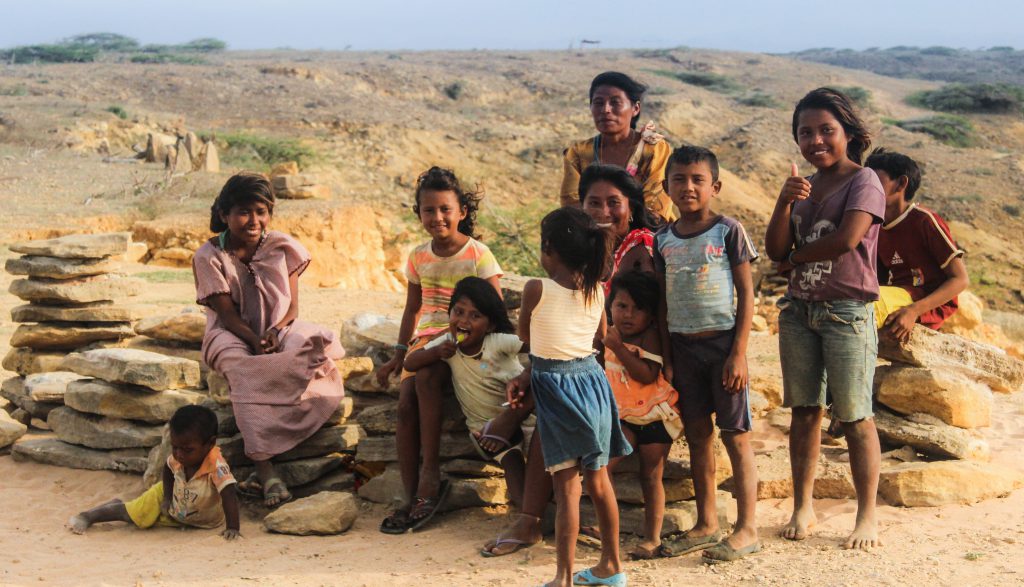
This initiative has seen some positive impact and during the last decade, child mortality has reduced, resulting in a change from 20.4 deaths per 1,000 live births to 17.7 (Ministerio de Salud y Protección Social, 2014). Mortality from acute diarrheal disease (ADD) also declined among infants in the country, from 33.8 deaths per 100,000 children under five years of age to 3.7 deaths. The same can be noted with the trend of acute respiratory infection (ARI), which varied from 35.3 to 15.9 deaths.
Child and maternal mortality rates continue to be very high, particularly among rural, indigenous and Afro-Colombian populations (Committee on the Rights of the Child, 2015). There are still cases of death in children younger than one year of age from causes related to respiratory disorders in the prenatal period; congenital malformations of the respiratory system and prenatal period infections, especially in provinces such as Amazonas, Chocó and Vaupés show the highest infant mortality rates. Additionally, 13.2 percent of children under 5 suffer from chronic malnutrition and 3.4 percent from general malnutrition (Ministerio de Salud y Protección Social, 2014).
Regarding adolescent health, there is a very high rate of adolescent pregnancies, in particular in rural areas, affecting girls as young as under fifteen years of age (Committee on the Rights of the Child, 2015). This results in a high rate of maternal mortality among adolescents stemming from inadequate access to sexual and reproductive services. However in 2021, children and families in Colombia were positively impacted by the increase in COVID-19 vaccination, including those from prioritised groups, such as teachers and children; the reopening of schools as well as the launch of the measles and rubella immunisation campaign for children under ten years (UNICEF, 2022).
Right to water and sanitation
In Colombia, 1.4 million people lack clean water. This accounts for around 3 percent of the population. There is a large discrepancy between urban and rural populations and their access to clean water (Embry, 2020). In urban areas, basic water services reach 98.8 percent of the population in comparison to rural areas where only 86 percent of the population have access to clean water (Bluma, 2020, 25).
The Colombian government plans to increase water accessibility (World Bank Group, 2019) to rural regions such as La Guajira by 2024. Additionally, in 2019, over 8,000 indigenous people (Miller, 2019) living in rural Colombia gained access to basic water facilities through the development of reservoirs and ancillary infrastructure.
Due to poor access to WASH facilities, 2 percent of the national GDP goes toward health-related costs. In 2016, there were 366 deaths (World Health Organisation, 2019) due to poor sanitation and water conditions in Colombia. In 2012, there were 119 deaths among children under 5 years old due to inadequate access to water and sanitation (World Health Organisation, 2019). It is estimated that 4.9 million people (WaterAid, 2020) do not have access to a toilet in Colombia.
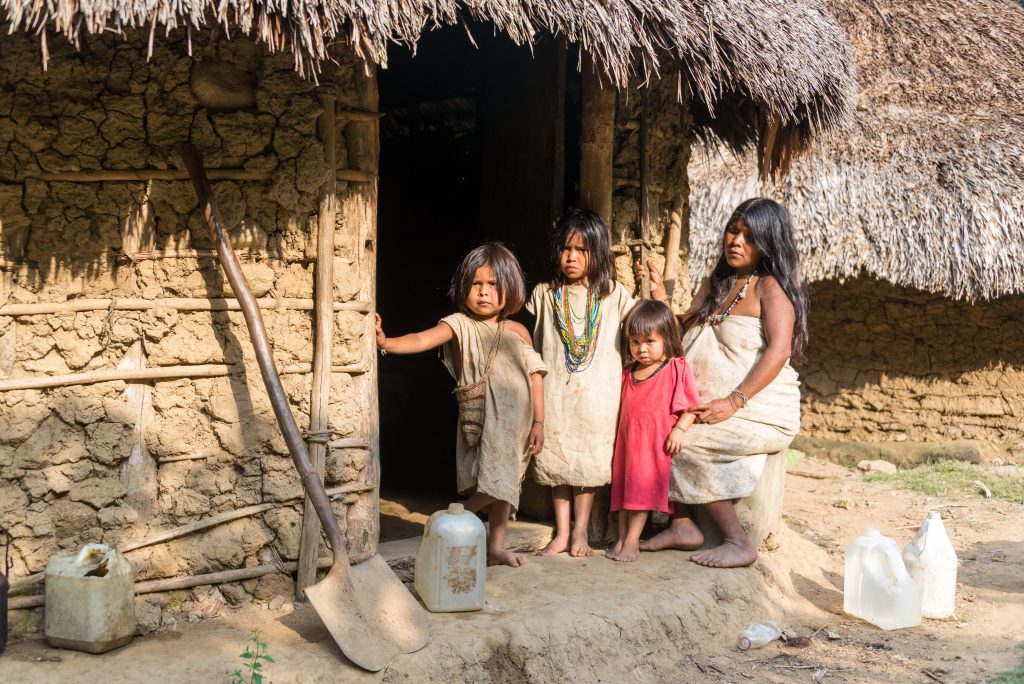
In rural areas, 3 in 10 people do not have access to safe toileting facilities. UNICEF identified that only 1 in 5 schools had both soap and toilet paper available for student use (WaterAid, 2020). In 2015, 88.2 percent had access to basic sanitation services compared to 85.6 percent in 2000, which is a marginal improvement over 15 years (Bluma, 2020, 26). There has been a very large increase in basic sanitation services for Colombia’s rural population, reaching 72.0 percent (Bluma, 2020, 27).
With the spread of COVID-19 the provision of safe water, sanitation and hygienic conditions has become essential in protecting human health. Colombia’s minority populations including afro-descendants, indigenous communities, palanqueros, and others are among the groups hit the hardest (Rocha et al., 2020). This is especially worrying considering that the Colombian Constitutional Court has, through various rulings, given access to drinking water the status of fundamental rights. Other problems relating to access to drinking water relate to Colombian inhabitants not covered by reconnection measures, and people who can only access drinking water through illegal connections are most often those that live on or below the poverty line (Rocha et al., 2020).
Right to identity
In Colombia, birth registration is free of charge and the registration process is generally carried out in the town where the child is born. At the time of registration, the baby is assigned a Personal Identification Number (NUIP) (Committee on the Rights of the Child, 2015). This number is unique to the child; the footprints of the child are also taken during the birth registration process. The right to be recognized as a person before the law is a critical step in ensuring lifelong protection and is a prerequisite for exercising all other rights (UNICEF, 2021). Registration is proof and can be used to access services such as education and health care as well as document a child’s age.
Indigenous and Afro-Colombian children continue to face discrimination and numerous challenges in accessing education, health care, civil registration services and justice (Committee on the Rights of the Child, 2015). They are disproportionately affected by violence and armed conflict; these children are recruited by non-State armed groups.
Risk factors → Country-specific challenges
Children in armed conflict
The signing of the final agreement for Ending the Conflict and Building a Stable and Lasting Peace between the Government of Colombia and the Revolutionary Armed Forces of Colombia People’s Army and the transformation of Fuerzas Armadas Revolucionarias de Colombia-Ejército del Pueblo (hereinafter FARC-EP) into a political party (United Nations Security Council, 2017), put an end to a five-decade-long conflict and led to the demobilisation of FARC-EP and its transformation into a political party.
However, violence and insecurity linked to armed groups seeking to exert control in areas vacated by the former FARC-EP continue to have an impact on the rights and well-being of children (United Nations Security Council, 2019). Between July 2016 and June 2019, the country task force verified 850 grave violations against children, representing a decrease compared with the 2,078 grave violations that were verified between September 2011 and June 2016.
The recruitment and use of children was the most prominent grave violation verified, reaching a peak in 2018. The children, between 13 and 17 years of age, including five Venezuelan children, were recruited. Recruitment and use by the Ejército de Liberación Nacional (hereinafter the ELN) reached its peak in 2017, with children from indigenous communities often targeted. For instance, in February 2017, five indigenous children between the ages of 14 and 17 years were recruited by ELN and in June 2017, seven children, including four girls, all members of an indigenous community, were recruited and used by ELN.
Strategies used by armed groups to recruit children involved promises of money and protection or other forms of support and benefits for their families. Girls were often exposed to sexual violence during their association with armed groups. From July 2016 to June 2019, there were reports of the killing of 91 children and the maiming of 95 children, some as young as 5 years of age. Child casualties were the result of crossfire, indiscriminate attacks, the direct targeting of children, and bombing, as well as accidents caused by anti-personnel landmines and unexploded ordnance. Children associated with armed groups were killed or maimed during the fighting.
Children were exposed to grave violations, in particular recruitment and sexual violence, and their access to education and medical services was gravely affected. Afro-Colombian communities and indigenous people have been particularly affected by this violence, which is endangering their survival (Sardiza & García, 2017). These two ethnic groups account for 47 percent and 25 percent respectively of the total population massively displaced in Colombia in 2017. Historically, ethnic groups accounted for 10 percent and 3 percent respectively of the 7.4 million internally displaced persons (hereinafter IDPs) in Colombia.
Forced displacement
Colombia has endured several decades of conflict and this has resulted in the forced displacement of entire families that have a direct impact on young boys and girls. Some of the most serious of these effects are migration since children and their families are often forced to leave the areas of conflict, and the recruitment of children, which forces the child to become directly involved in the conflict, inevitably leading to child deaths. The majority of displaced children in Colombia are Afro-Colombian or from indigenous backgrounds. It is in particular displaced girls, who are greatly exposed to violence and discrimination, and this has not been satisfactorily addressed (Committee on the Rights of the Child, 2015).
According to UNICEF, there are approximately 520,000 displaced children as a result of the armed conflict (Pettersson, 1996). Armed conflict disrupts the family structure resulting in a situation of displacement that has the effect of eventually disrupting or destroying the family (Soto & Niños, 1999). It has been estimated that 60 percent of displaced children were forced to flee with other members of their families whereas 63 percent confirm that at least one member of their family was murdered or was a victim of an attempt to take their life. With respect to the quality of life, the displaced child is usually in extremely needy conditions, because their parents are unemployed or because of malnutrition, disease, and other factors that can cause the quality of life of children to deteriorate radically in these circumstances.
Child labour
Colombia has made efforts to eliminate the worst forms of child labour. The Colombian Code for Children and Adolescents sets the minimum age for work at fifteen (Government of Colombia, 2006). A labour inspector or relevant local government official must also provide authorization for adolescents aged fifteen to seventeen to work.
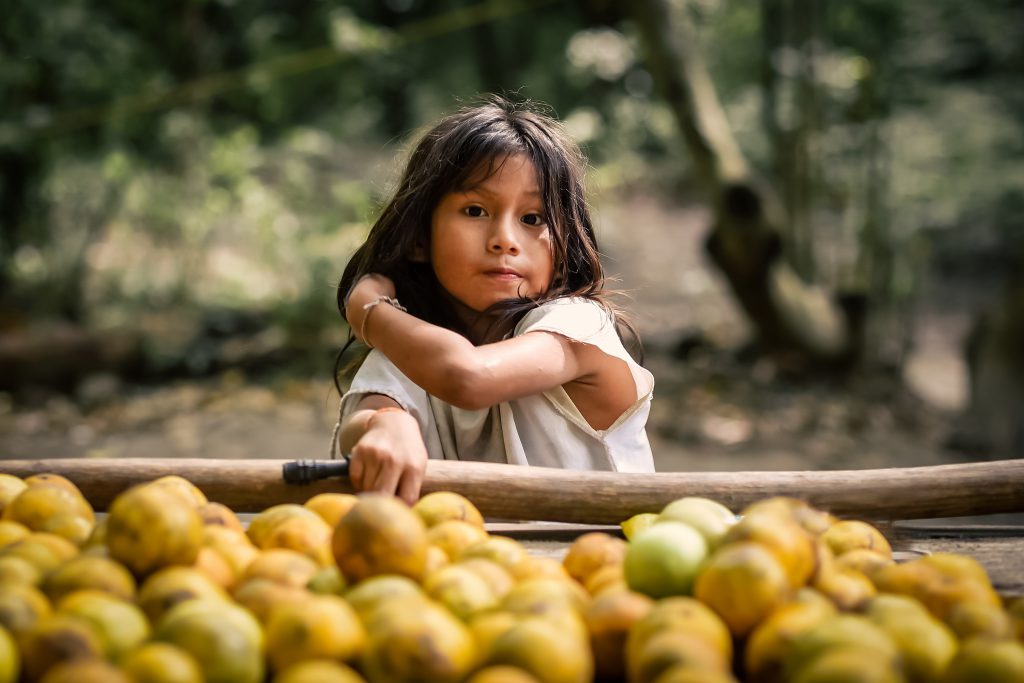
The Code for Children and Adolescents sets the minimum age for hazardous work at eighteen. The Labour Code specifically prohibits children under the age of eighteen from working in underground mining and industrial painting (Government of Colombia, 1951). Colombia ratified International Labour Organisation (hereinafter ILO) Convention 138 on the Minimum Age for Admission to Employment (International Labour Organisation, 2001) on February 2, 2001 and ILO Convention 182 on the Worst Forms of Child Labor (International Labour Organisation, 2005) on January 28, 2005.
Children in Colombia engage in the worst forms of child labor, including commercial sexual exploitation, agricultural activities and street work. In the agricultural sector, children may be exposed to long hours, the elements and high levels of dust, perform physically arduous tasks, use dangerous tools and face a high risk of occupational injury (International Centre of Education and Human Development (CINDE), 2006, 3).
They work in the production of coffee, sugarcane and coca, an illegal stimulant. Children are also engaged in artisanal mining, where they are exposed to toxic gases, long hours, explosives, and dangerous chemicals such as nitric acid. They work in emerald, gold, clay and coal mining, breaking rocks, digging in dirt with picks or their bare hands, removing water from mines and lifting heavy loads (Andi, 2012).
Children work on the streets in urban areas, where they may be exposed to long hours, the elements and risk of physical injuries and robberies. They lift heavy loads in markets and are engaged in street vending (Bogota City Council, 2012). Children are also involved in recycling, where they are exposed to toxic substances such as lead and sulfuric acid as well as dangerous waste (Bogota City Council, 2012).
Children are engaged in domestic service in Colombia. Indigenous families in rural areas often send their children to urban households to work as domestic workers. Child domestic workers may work up to twelve hours per day and perform household chores such as ironing, cleaning and cooking.
Children working in domestic service are vulnerable to physical and sexual abuse by their employers. It was found that 2,117 children engaged in commercial sexual exploitation in eleven cities in Colombia (Plan International et al., 2014). Children are also involved in child pornography and sex tourism and are trafficked for the purpose of commercial sexual exploitation domestically and internationally (US Department of State, 2019).
Environmental challenges
Colombia’s national plan to reduce greenhouse gas emissions is highly insufficient to meet the Paris Agreement goal of limiting global warming to 1.5°C above pre-industrial levels, according to the Climate Action Tracker (Roth, 2022). The plan commits Colombia to reduce deforestation to 50,000 hectares per year by 2030. Two-thirds of forest destruction occurs in the Amazon region, driven in large part by cattle ranchers and FARC dissident groups that pressure local residents to log trees, extort farmers, promote the planting of coca crops to produce cocaine, and threaten people who support conservation efforts.
In November 2021, at the global climate summit in Glasgow, COP26, the Colombian government committed to having 30 percent of the country’s territory declared a protected area in 2022 (Roth, 2022). The figure stood at 15 percent. Climate change is causing increased temperatures and droughts and could lead to extreme rainfall and flooding requiring the government to take steps to protect at-risk populations from foreseeable harm. The authorities’ inadequate response to prolonged drought in the northeastern state of La Guajira has undermined Indigenous Wayuu people’s access to food and water, leading to high rates of childhood malnutrition deaths.
Written by Igi Nderi
Last updated on March 22, 2022
References:
Andi, R. (2012, May 13). Niños y Niñas Exponen sus Vidas Mientras Trabajan en la Minería Artesanal. REPUBLIC OF COLOMBIA LAWS GOVERNING EXPLOITATIVE CHILD LABOR REPORT. Retrieved on March 21, 2022, from http://www.redandi.org/sugestao-de-pauta/ninos-y-ninas-exponen-sus-vidas-mientras-trabajan-enla-mineria-artesanal.
Bluma, M. (2020, June 1). Struggling to Survive: Water Scarcity and Poor Sanitation in Colombia and Kenya. Global Majority E-Journal, 11(1), 20-33. Retrieved on March 8, 2022 from:https://www.american.edu/cas/economics/ejournal/upload/global_majority_e_journal_vol-11_no-1_bluma.pdf.
Bogota City Council. (2012, June 12). El 59 % de los niños y niñas trabajadores en Bogotá son menores de 15 años. Bogota City Council. Retrieved on March 21, 2022, from http://concejodebogota.gov.co/prontus_concejobogota/site/artic/20100611/pags/20100611160828.php.
Committee on the Rights of the Child. (2015, March 6). Concluding observations on the combined fourth and fifth periodic reports of Colombia. CRC/C/COL/CO/4-5. Retrieved on February 26, 2022, from https://www.refworld.org/publisher,CRC,CONCOBSERVATIONS,COL,566e765c4,0.html.
Embry, L. (2020, May 19). 10 Facts About Sanitation in Colombia. The Borgen Project. Retrieved on March 8, 2022, from https://borgenproject.org/sanitation-in-colombia/.
Garavito, C. (2022, March 1). Colombia | History, Map, Flag, Capital, Population, Currency, & Facts. Encyclopaedia Britannica. Retrieved on February 22, 2022, from https://www.britannica.com/place/Colombia.
Gómez, A. (2018, June). Realising the Fundamental Right to Health through Litigation The Colombian Case. Health Hum Rights, 20 (1)(1), 133- 145. Retrieved on February 26, 2022 from https://www.hhrjournal.org/2018/06/realizing-the-fundamental-right-to-health-through-litigation-the-colombian-case/.
Government of Colombia. (1951, June 7). Código Sustantivo del Trabajo (with modifications until 2009). Government of Colombia. Retrieved on March 21, 2022, from http://www.secretariasenado.gov.co/senado/basedoc/codigo/codigo_sustantivo_trabajo.html#1.
Government of Colombia. (2006, November 8). Código de la Infancia y la Adolescencia, Ley 1098 de 2006. Government of Colombia. Retrieved on March 21, 2022, from http://www.presidencia.gov.co/prensa_new/leyes/2006/noviembre/ley1098081106.pdf.
Iexplore. (2015, May 1). Colombia — History and Culture. iExplore. Retrieved on February 22, 2022, from https://www.iexplore.com/articles/travel-guides/central-and-south-america/colombia/history-and-culture.
Infoplease. (2016, January 1). Colombia History. Infoplease. Retrieved on February 22, 2022, from https://www.infoplease.com/world/countries/colombia/history.
International Labour Organisation. (2001, February 2). Convention C138 – Minimum Age Convention, 1973 (No. 138). ILO. Retrieved on March 21, 2022, from https://www.ilo.org/dyn/normlex/en/f?p=NORMLEXPUB:12100:0::NO:12100:P12100_INSTRUMENT_ID:312283:NO.
International Labour Organisation. (2005, January 28). Convention C182 – Worst Forms of Child Labour Convention, 1999 (No. 182). ILO. Retrieved on March 21, 2022, from https://www.ilo.org/dyn/normlex/en/f?p=NORMLEXPUB:12100:0::NO:12100:P12100_INSTRUMENT_ID:312327:NO.
Max Planck Institute. (2021, September 16). Colombia’s Constitution of 1991 with Amendments through 2015. Constitute Project. Retrieved on February 25, 2022, from https://www.constituteproject.org/constitution/Colombia_2015.pdf?lang=en.
Miller, B. (2019, October 15). How Countries Manage Water: Colombia. Americas Quarterly. Retrieved on March 8, 2022, from https://www.americasquarterly.org/article/how-countries-manage-water-colombia/.
Ministerio de Salud y Protección Social. (2014, April 26). The children of Colombia, a priority for the Ministry of Health and Social Protection. Ministerio de Salud y Protección Social. Retrieved on February 28, 2022, from https://www.minsalud.gov.co/English/Paginas/The-children-of-Colombia,-a-priority-for-the-Ministry-of-Health-and-Social-Protection.aspx.
Organisation for Economic Co-operation and Development. (2016, May 16). Education in Colombia. OECD. Retrieved on February 27, 2022, from https://www.oecd.org/education/school/Education-in-Colombia-Highlights.pdf.
Pettersson, B. (1996, April 16). Regional Office for Latin America and the Caribbean, State Policies for the Protection of Children in Latin America, in Minors under Protection, Seminar, Memorias. UNICEF.
Plan International, Antonio Restrepo Barco Foundation, & Renacer Foundation. (2014, April 26). Escenarios de la Infamia,. Plan International. Retrieved on March 21, 2022, from http://plan.org.co/quienes-somos/prensa-y-publicaciones/publicaciones/desde-lascampanas/escenarios-de-la-infamia/?searchterm=escenarios.
Rocha, N., Pinzón, G., & Correa, L. (2020, November 18). Covid-19 reveals inequalities in access to Colombia’s water supply. International Bar Association. Retrieved on March 8, 2022, from https://www.ibanet.org/article/715F3209-2AB4-48AD-B4E6-5A81CB234EAA.
Roth, K. (2022, January 31). World Report 2022: Colombia. Human Rights Watch. Retrieved on March 22, 2022, from https://www.hrw.org/world-report/2022/country-chapters/colombia#254c99.
Saldarriaga-Concha Foundation. (2016, June 12). DISABILITY AND SOCIAL INCLUSION IN COLOMBIA. UN Treaty Body Database. Retrieved on February 27, 2022, from https://tbinternet.ohchr.org/Treaties/CRPD/Shared%20Documents/COL/INT_CRPD_CSS_COL_24466_E.pdf.
Sardiza, A., & García, D. (2017, December 31). Protection is needed as the situation deteriorates in the Pacific Region of Colombia. Global Protection Cluster. Retrieved on March 15, 2022, from https://www.globalprotectioncluster.org/_assets/files/field_protection_clusters/Colombia/files/020417-protection-cluster-colombia-pacific-situation-final.pdf.
Soto, J. Z., & Niños, L. (1999, February 26). THIRD REPORT ON THE HUMAN RIGHTS SITUATION IN COLOMBIA. OEA/Ser.L/V/II.102 Doc. 9 rev. 1 26 February 1999 Original: English THIRD REPORT ON THE HUMAN RIGHTS SITUATION IN COLOMBIA TABLE. Retrieved on March 17, 2022, from https://www.legal-tools.org/doc/8385d8/pdf.
Trines, S., Carroll, L., & Reyes, A. (2020, June 23). Education in Colombia. WENR. Retrieved on February 27, 2022, from https://wenr.wes.org/2020/06/education-in-colombia-2.
UNICEF. (2021, August 5). Birth Registration. UNICEF Data: Monitoring the situation of children and women. Retrieved on March 8, 2022, from https://data.unicef.org/topic/child-protection/birth-registration/.
UNICEF. (2022, January 30). Country Office Annual Report 2021-Colombia. UNICEF Colombia. Retrieved on February 28, 2022, from https://www.unicef.org/media/115936/file/Colombia-2021-COAR.pdf.
UNICEF Data. (2020, December 31). Colombia (COL) – Demographics, Health & Infant Mortality – UNICEF DATA. UNICEF Data. Retrieved on March 22, 2022, from https://data.unicef.org/country/col/.
United Nations Human Rights Office of the High Commissioner. (2020, January 1). Treaty bodies Treaties. Treaty bodies Treaties. Retrieved on February 22, 2022, from https://tbinternet.ohchr.org/_layouts/15/TreatyBodyExternal/Treaty.aspx?CountryID=37&Lang=EN.
United Nations Security Council. (2017, April 21). Final Agreement for Ending the Conflict and Building a Stable and Lasting Peace. United Nations. Retrieved on March 16, 2022, from https://documents-dds-ny.un.org/doc/UNDOC/GEN/N17/109/11/PDF/N1710911.pdf?OpenElement.
United Nations Security Council. (2019, December 31). Children and armed conflict in Colombia. United Nations. Retrieved on March 15, 2022, from https://reliefweb.int/sites/reliefweb.int/files/resources/N2000035.pdf.
UNTC. (1969, November 22). Inter-American Convention on Human Rights, Pact of San José (1969). United Nations Treaty Collection. Retrieved on February 22, 2022, from https://treaties.un.org/pages/showdetails.aspx?objid=08000002800f10e1.
US Department of State. (2019, June 19). Colombia (Tier 1) in Trafficking in Persons Report. US Department of State. Retrieved on March 21, 2022, from http://www.state.gov/documents/organization/142982.pdf.
WaterAid. (2020, February 22). Colombia. WaterAid. Retrieved on March 8, 2022, from https://www.wateraid.org/where-we-work/colombia.
The World Bank. (2021, January 31). Life expectancy at birth, total (years) – Colombia | Data. World Bank Data. Retrieved on March 22, 2022, from https://data.worldbank.org/indicator/SP.DYN.LE00.IN?locations=CO.
The World Bank. (2021, January 31). Population ages 0-14 (% of total population) – Colombia. The World Bank. Retrieved on March 22, 2022, from https://data.worldbank.org/indicator/SP.POP.0014.TO.ZS?end=2020&locations=CO&start=1960&view=chart.
World Bank Group. (2019, April 23). Improving Water Supply and Sanitation Services in La Guajira, Colombia. World Bank Group. Retrieved on March 8, 2022, from https://www.worldbank.org/en/results/2019/04/23/improving-water-supply-and-sanitation-services-in-la-guajira-colombia.
World Health Organisation. (2019, February 7). SDG 3.9.2 – Mortality rate attributed to unsafe water, unsafe sanitation and lack of hygiene (exposure to unsafe Water, Sanitation and Hygiene for All (WASH)). Global Health Observatory data repository. Retrieved on March 8, 2022, from https://apps.who.int/gho/data/node.main.INADEQUATEWSH?lang=en.
[1] This article by no means purports to give a full or representative account of children’s rights in Colombia; indeed, one of the many challenges is the scant updated information on children, much of which is unreliable, not representative, outdated or simply non-existent.

